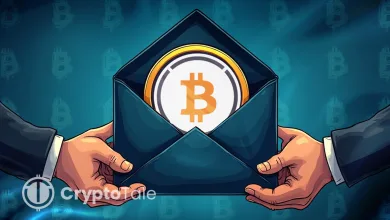What are P2P Crypto Scams? How to Identify and Avoid Them?

Cryptocurrency has transformed the transaction landscape, introducing a peer-to-peer (P2P) model that facilitates direct transactions between buyers and sellers. It eliminates the need for third-party intermediaries and enables a more streamlined and decentralized exchange process. On the one hand, these platforms are useful because they eliminate middlemen or bring a lot of flexibility and freedom; on the other, they allow P2P crypto scams. From fake payment tricks to complicated scams, fraudsters target innocent traders and make common transactions a nightmare for their victims. In this article, we’ll discuss the types of P2P crypto scams, how to protect yourself from such scams, and more.
What Are P2P Crypto Scams?
Before we plunge into various P2P crypto scams, traders have to know what P2P platforms actually are. A Peer-to-Peer crypto platform is a decentralized platform where traders can directly communicate with each other and facilitate transactions. Through these platforms, traders can negotiate the terms of transactions, including the price, payment methods, and other details. The major advantage of these platforms is that they don’t have a central authority to oversee the transactions; instead, the traders have full control over their transactions.
P2P crypto scams are a series of schemes (fake payment scams, phishing scams, chargeback scams, etc) designed to target unsuspecting traders and manipulate them into losing their money. Although P2P platforms offer anonymity and freedom of transaction, they come at the risk of getting scammed, as the benefits of the platform make it a perfect hunting ground for predators (fraudsters) to target easy prey ( victims of fraudsters). Furthermore, they can easily get away with your money because, unlike centralized exchanges where strict regulations are enforced, and each transaction is monitored, P2P platforms have minimal control.
Related: Common Crypto Scams You Need to Know
What Are the Common Types of P2P Crypto Scams?
Chargeback Scams
Scammers use the chargeback feature available on some third-party applications to cancel or reverse the transaction at the last minute, leaving the crypto seller without funds after transferring the crypto. At times, they may also attempt the use of cheques for the completion of the transaction, only to discover the cheques were either bounced or cancelled when the seller attempts to encash them.
To avoid chargeback scams,
- Make sure you have received the funds before authorizing the crypto transfer.
- If the buyer is trying to pay through a cheque, don’t accept the payment, and if the buyer insists on paying through this method, cancel the transaction.
- Don’t accept payments from third-party accounts, as they carry a greater risk of chargeback.
Fake Payment Scams
At times, the fraudsters may manipulate the seller into thinking that they have made the payment for the crypto by using fake screenshots or false confirmations and get the seller to release the crypto. When the seller tries to check the transaction, they may be surprised to find that there is no transaction record.
To avoid fake payment scams,
- Take the time to verify the screenshot or other confirmation details sent over by the buyer.
- No matter how much the buyer pressures you into unlocking the crypto, saying that they have made the payment. Wait for the transaction to be verified on your end before sending them the crypto.
Triangle Scams
Triangle scams usually involve two scammers who are in cohorts with each other. They place an order with the same seller simultaneously and make use of the seller’s trust by pressing them to release the coins without any kind of proper validation. If the seller was in a hurry, they might release the coins to the buyer only to find that they had been tricked and have to release the coins again. This leads to the seller releasing the coins twice but only receiving half or less than half of the intended amount after they sold the assets.
For example, let’s take the first scammer as Joe and the second scammer as Mike. Joe placed an order for 3000 USDT, and Mike placed an order for 4000 USDT. Mike first pays for the 3000 USDT, Joe marks the order as paid, and the seller releases the crypto to Joe. Then Mike pays the remaining 1000 USDT and, with the initial payment, pressures the seller to release the tokens.
To avoid triangle scams,
- Check the payer’s name and other details and verify whether it matches with the one who marked the order as paid before releasing the assets.
- When receiving proof of payment from the buyers, be cautious and take your time to verify them because scammers might try to reuse payments made for other orders.
SMS Scams
Scammers pose as wallet apps and banks and send fake SMS to the seller, claiming that the buyer has sent the funds to the seller. These messages might closely resemble authentic text messages sent from banks and wallet apps. After seeing the SMS, the seller might release the assets.
To avoid SMS Scams,
- Don’t trust such messages; instead, check your wallet or bank account for any receipt of funds before confirming the transaction.
- If the buyer insists on releasing the funds before the buyer verifies the fund transfer, be cautious and take time to verify it.
Man-in-the-Middle (MitM) Scams
Here, the scammers pose as genuine P2P advertisers and communicate with potential victims through third-party applications such as WhatsApp and other social media networks. They provide the victim with their bank account details coupled with a P2P advertisement link to make their scams look genuine. Then, the scammer may tell the victim to copy the details from the provided bank details and paste them on the P2P chat as confirmation.
When the victim shares the details in the P2P chat, unknown to the victim, these details would be visible to the unrelated buyer who is participating in the transaction. The buyer, unaware of the scam, would think this is the account details for the payment and send money to that account. On the other hand, the seller sends the crypto to the buyer, believing that he is receiving the payment. In this case, even if the victim files an appeal to customer service in order to address the problem, it cannot be achieved. The reason is that communication between them occurred in the third-party application, and the funds were transferred to the account of another exchange.
To avoid SMS Scams,
- If you receive any kind of offers or information through external channels, don’t trust them.
- Avoid communication about P2P transfers outside of the P2P platform.
- Don’t place your hope on third-party payments. Furthermore, third-party transfers violate the transaction policies.
Crypto Platform Imposter Scams
Sometimes, scammers pose as employees of P2P platforms and contact users through private emails, messages, or social media accounts. They might ask users to share their personal information or their email addresses on the P2P chat under the guise of ‘verification.’ Then, they would send users a phishing email that looks similar to the platform’s official email and trick users into releasing their assets before receiving the payment.
To avoid crypto platform imposter scams,
- P2P platforms would never send emails, coercing users to complete the transaction. Therefore, if you ever receive these kinds of emails, then be careful when confirming the details of the buyer, and should not release the assets until payment has been made.
- Always keep your personal information private and, under no circumstances, share it through the P2P chat.
- Remain vigilant of messages and emails sent to you through unofficial channels.
- Accept payments only through the method you have mentioned and check whether their name matches the name on the platform.
How to Protect Yourself From P2P Crypto Scams?
- Verify User Profile: All the transactions made by the user will be displayed on their profile. So, before starting any transaction, verify their trading history and reputation. During the verification process, if you find anything suspicious, avoid trading with that user.
- Do Not Disclose Personal Information: Private keys and login details should be kept confidential. These people use different techniques, for instance, they may use phishing to get your details and even pretend to be the customer support.
- Verify All P2P Transactions: You should only release the crypto after confirming the completion of the transaction through the bank account or wallet balance. Sometimes, the buyer may force you into releasing by providing evidence of the transaction. Remember that the proof can be forged, so don’t rush with the verification of the transactions.
- Operate Only on Reputable P2P Platforms: There are many P2P platforms available on the market. Only use those platforms with a good reputation and strong security measures. These features can help protect transactions.
- Allow Two-factor Authentication (2FA): Enabling two-factor authentication offers an additional layer of security to your account. If scammers get hold of a user’s login credentials, 2FA makes it much harder for them to access the information in your account.
- Remain Cautious: When conducting deals, always remain vigilant and do thorough research about the person you’re dealing with. If you find that the buyer can be trusted after the research, then proceed with the transaction; if not, cancel the transaction.
What to Do In Case You Were Scammed?
- Report the Scam: Immediately contact the support team of the P2P platform. If you are using a well-established platform, they might assist you in recovering the lost funds because these platforms have rules in place to investigate fraud.
- Notify Authorities: Depending on the scam’s nature, notify the local authorities or financial crimes division.
- Secure Your Assets: In case your account has been compromised, enable 2FA, change the password, and transfer the remaining assets in the account to another wallet.
Conclusion
While P2P crypto trading has several benefits, including flexibility, control, and much more, it is crucial to note that all these are associated with a cost. The price is the danger of becoming a victim of fraudsters. Like most technological advancements, scammers also adapt, from chargeback and fake payment scams to more complex scams, such as triangle scams, which are almost impossible to defend against. To stay safe from these scams, you should always be cautious, check every transaction, never communicate with anyone outside the platform, and so on. It is thus always important to keep a close eye and never be overconfident, especially in the world of P2P crypto trading.





